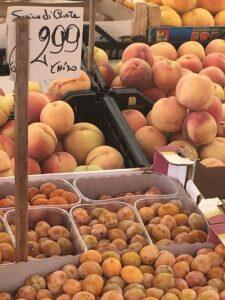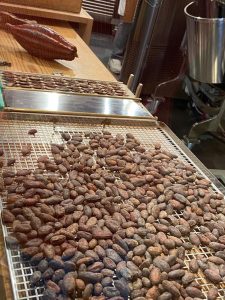Sicily: Rich History, Culinary Fusion, and Wine Evolution Explored
Embark on an immersive journey delving into Sicily’s captivating history, diverse cuisine, and evolution of wines with the insightful narrative crafted by Jenny Siddall

Sicily, the largest Mediterranean island, spans a breathtaking 4-hour drive from Marsala in the west to Catania in the east. This vibrant land boasts a spectacular coastline, a rugged mountainous interior, and the fertile slopes of Mt Etna, an active volcano.
Dating back to 12,000 BC, Sicily stands as a great cultural crossing point in Europe. The Phoenicians, Greeks, Romans, Vandals, Ostrogoths, Byzantine Empire, and the Norman conquest in 1071, all left their indelible marks before Sicily finally unified with Italy in 1860.


The island’s melting pot of cultures profoundly impacted its cuisine. Sicily earned the moniker “breadbasket” due to the Romans introducing “hard grain” durum wheat. “Itriyya” or spaghetti originated here and became a staple for sailors. Expect delicacies like fish couscous from Trapani.
Arab influences endure in Sicilian cuisine through the extensive use of apricots, almonds, citrus, saffron, and spices. The Norman influence brought meats to the table, while the Greeks introduced fish, olives, pistachios, and eggplants. The Spanish brought New World treasures like cocoa, maize, peppers, and the crucial tomato.


Many desserts still rely on naturally sweet ingredients like almonds, seen in cakes like Paste di Mandorla and marzipan in Martorana fruit-shaped sweets. Candied citrus peel decorates famous desserts like Cassata and Cannoli.
Viticulture arrived in the 8th century, and under Norman rule, Sicily’s principal industry remained wheat, but wine exports to mainland Italy and the Levant began. Wines, especially Marsala, gained popularity in the 18th century for their endurance during sea voyages.


From bulk wine production, Sicily transitioned in the 1980s, embracing quality production with the introduction of international grape varieties. The 1990s showcased Sicily’s potential by blending local and international grapes, yielding quality wines like Etna Rosso and Bianco DOC and the prestigious DOCG Cerasuolo di Vittoria.


Sicily is by no means just a producer of red and fortified wine. Whites made from the typical varieties used to make Marsala, Inzolia, Grillo, and Catarratto, are becoming ever more popular. Sparkling wines made on Mt Etna using Nerello Mascalese, a red grape fermented without its skins to produce a sparkling white wine, are much in demand.
Lastly, the perfect wine to accompany those sweet desserts are wines made from Zibibbo, a naturally sweet wine made by drying Muscat of Alexandria grapes in the sun before fermentation or Malvasia grapes. Try a glass of Malvasia delle Lipari or Passito di Pantelleria. Pure Sicilian sunshine captured in a glass!

